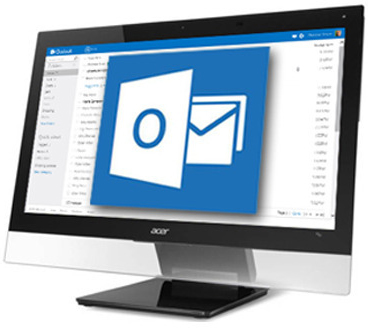 Outlook.com now supports the IMAP email retrieval technology, expanding the scope of client software and devices that can interact with the Microsoft webmail service.
Outlook.com now supports the IMAP email retrieval technology, expanding the scope of client software and devices that can interact with the Microsoft webmail service.
“With announcement, we now have a richer email experience across devices and apps, including those not using EAS, such as Mac Mail and Thunderbird on a Mac,” wrote Microsoft official Steve Kafka in a blog post on Thursday.
However, early adopters of the feature, which was activated Thursday, are reporting some problems. In comments to Kafka’s blog post, complaints include that messages deleted using IMAP-compliant client applications remain on the Outlook.com Web interface and that messages can’t be downloaded from the server to their email clients.
Microsoft didn’t immediately respond to a request for comment.
Outlook.com already worked with Exchange ActiveSync (EAS), which allows it to be used with devices running the Windows Phone, iOS and Android mobile operating systems, according to Microsoft.
Microsoft decided to add IMAP after hearing from Outlook.com users “loud and clear that this was important.”
Another advantage of IMAP is that it can be used by third-party developers to create applications for Outlook.com or integrate existing applications with it, Kafka wrote.
Already, TripIt and six other developers have linked their applications and services with Outlook.com using IMAP.
“TripIt can now detect emails with travel confirmations in any Outlook.com inbox, and automatically import them into a TripIt itinerary,” Kafka wrote.
Another application, called Sift, mines messages in an Outlook.com inbox for shopping data, identifying the stores users shop in and the products they’re interested in to create “a personalized shopping experience.”
Meanwhile, Unroll.me provides an automated way for users to unsubscribe from email subscriptions and consolidate the others into a daily newsletter.
Microsoft unveiled Outlook.com in mid-2012, trumpeting it as a top-to-bottom reinvention of webmail whose improvements ranged from the user interface to the back-end infrastructure and which would leave Gmail and Yahoo Mail in the dust. Outlook.com eventually replaced the venerable Hotmail.com.
However, Outlook.com has had several high-profile stability and availability stumbles, the most recent one an extended incident that made it malfunction in different ways for several consecutive days in August.
An outage in March also tripped Outlook.com.
In fact, in July, Microsoft marked Outlook.com’s one-year anniversary with a long list of positives, but also acknowledged that the service hasn’t been as stable as expected.
“We had some bumps over the last year and there were places where our performance hasn’t met the high standard we set for ourselves,” Dick Craddock, group program manager of Outlook.com, wrote in that blog post, published on July 31.






